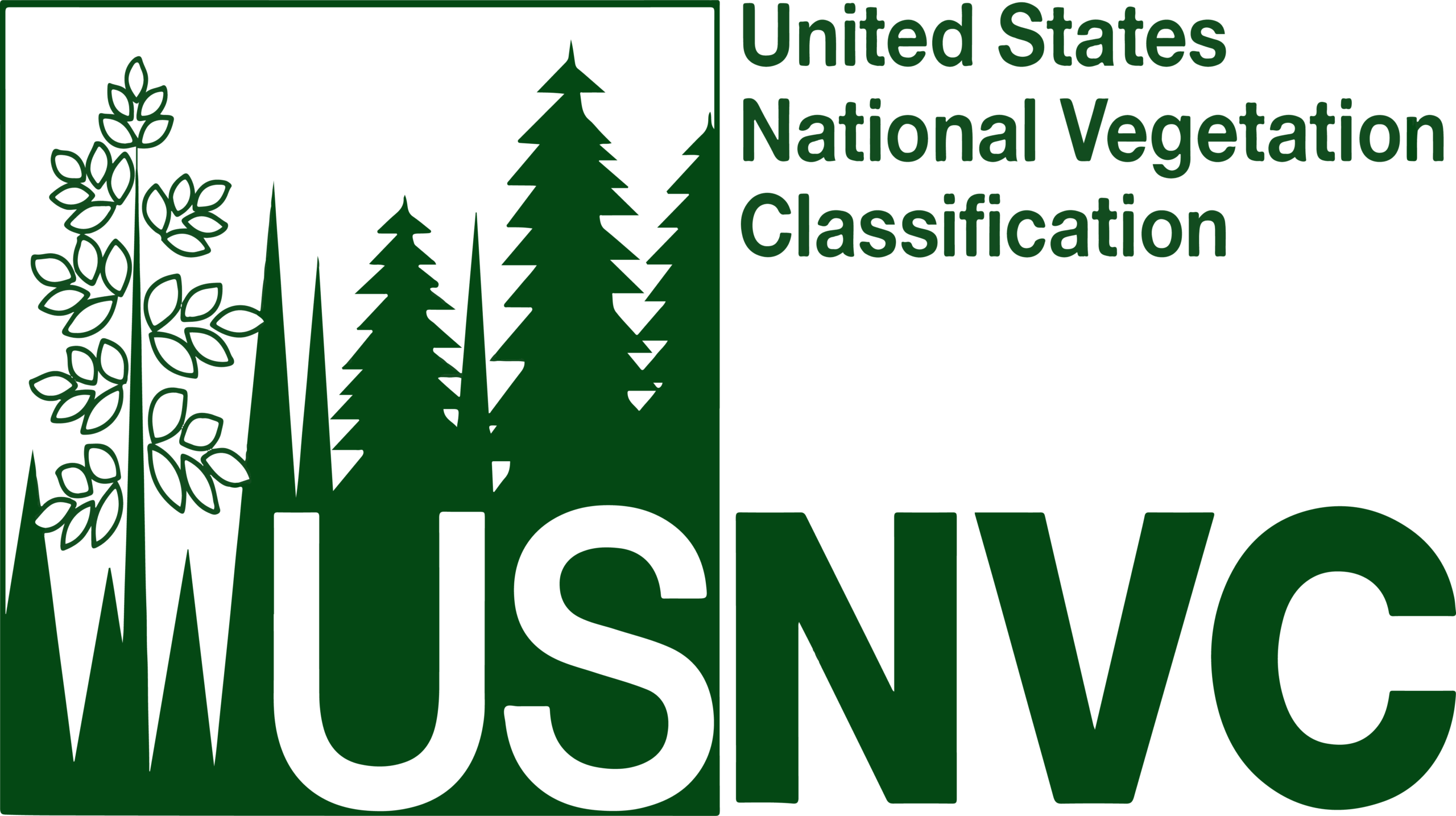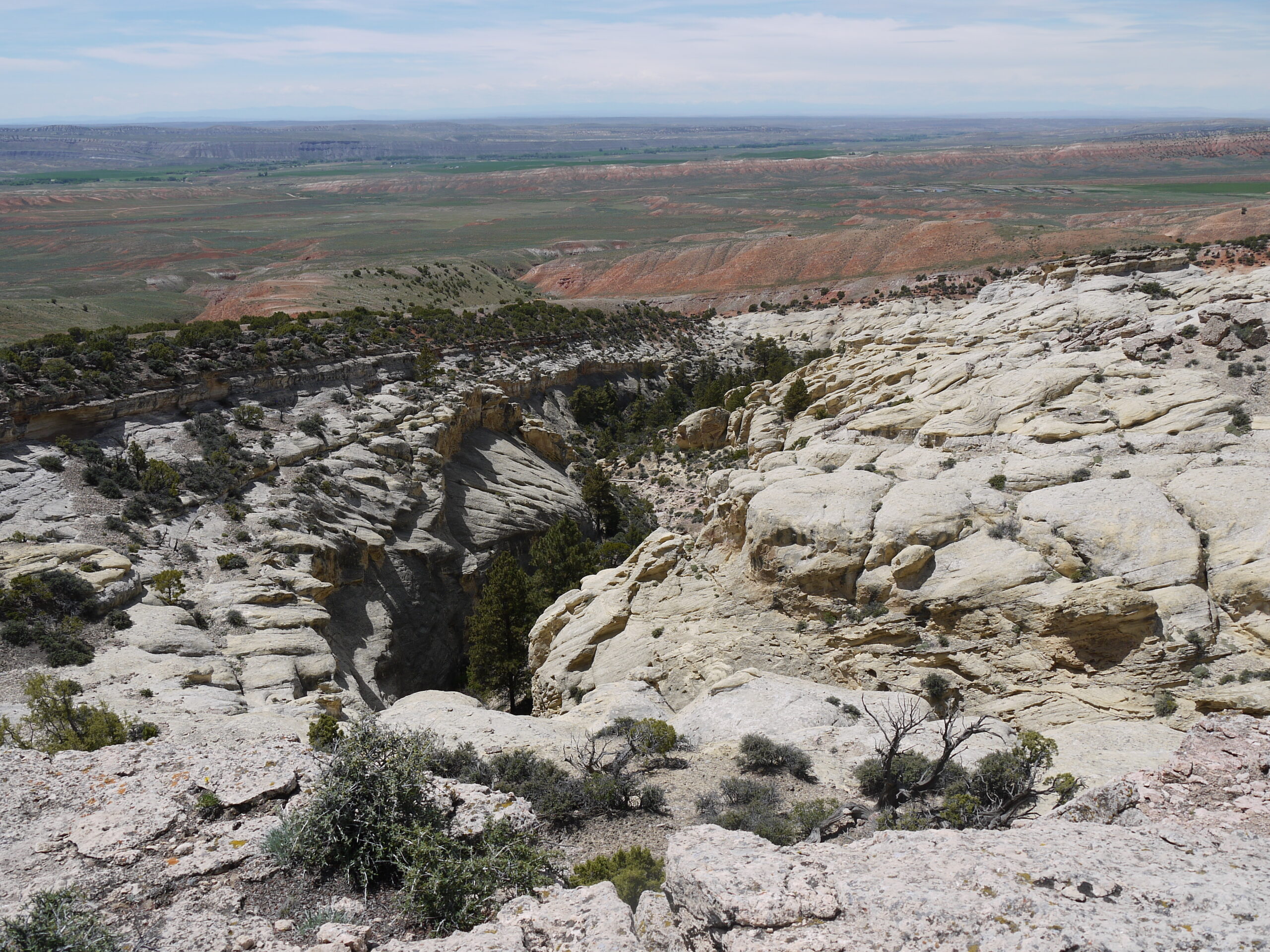Plant Communities
A plant community is an assemblage of plants that co-exist in a similar environment. Different communities are defined by their structure, form, and species composition. Plant communities are both spatially and temporally dynamic.
At broad scales, vegetation types are based strongly on shared growth forms that dominate an area and reflect patterns of climate, substrate, and disturbances. At fine scales, vegetation types are based on assemblages of plant species that co-occur in an area and are linked by their interactions with each other and their environment. At all scales, vegetation types can be described by repeating patterns in species composition, growth forms, and relationships to the environment in which they are found.

Vegetation Classification
Vegetation classification is the process of grouping stands of vegetation together based on shared characteristics. As with any taxonomy, vegetation classification is used to simplify complex patterns in order to communicate and share information. The USNVC is a classification of “existing” vegetation based on the physiognomy and taxonomy of all plant communities.
The top three levels (biome, subbiome, ecobiome) are coarse, describe major ecological categories on a global scale, and closely align with the Global Ecosystem Typology (GET). These levels emphasize physiognomy, a combination of the external appearance of vegetation, its vertical structure, and the growth forms of the dominant taxa as well as ecological drivers. The middle levels (division, macrogroup, group) reflect distinctive combinations of species in the context of regional and continental environmental variables and processes such as water cycles and fire patterns. Biogeography and florists are increasingly integrated at the three middle levels. The lowest levels (alliance and association) are the most fine-grained, based on diagnostic and/or dominant species and compositional similarity reflecting local to regional environmental factors.
The relationship between the new hierarchy levels and classification criteria is depicted in the diagram below.

Examples
The following table shows criteria and examples for the 8-level hierarchy of the National Vegetation Classification. The hierarchy has adopted the Realms framework of the Global Ecosystem Typology (GET) which covers the 4 core components of the biosphere that differ fundamentally in ecosystem organization and function: terrestrial, freshwater, marine, subterranean. The 6 Transitional Realms describe overlap between the realms. The 3 upper levels of the hierarchy now align closely with the GET.
Hierarchy for Natural Vegetation |
Vegetation Classification Criteria |
Ecological Context |
Scientific Name |
Colloquial Name |
|---|---|---|---|---|
Upper Levels |
Predominantly Physiology |
|||
1 Biome |
Broad combinations of general dominant growth forms. |
Basic temperature (energy budget), moisture, and substrate/aquatic conditions. |
Temperate-Boreal Forest & Woodland |
|
2 |
Combinations of general dominant and diagnostic growth forms. |
Global ecological drivers, such as mega- or macro-climatic factors driven primarily by latitude and continental position, or that reflect overriding substrate and disturbance regimes |
Cool Temperate Forest & Woodland |
|
3 |
Combination of ecosystem properties (especially dominant and diagnostic growth forms and structure) that share common ecological drivers. |
Global macroclimatic factors as modified by altitude, seasonality of precipitation, substrates, hydrologic conditions, and disturbance regimes. |
Temperate Deciduous-Mixed Forest & Woodland |
|
Middle Levels |
Physiognomy, biogeography, and floristics |
|||
4 |
Combinations of dominant and diagnostic growth forms and a broad set of diagnostic plant species that reflect biogeographic differences. |
Continental differences in mesoclimate, geology, substrates, hydrology, and disturbance regimes. |
Acer saccharum – Fagus grandifolia – Quercus rubra Forest & Woodland Division |
Eastern North American Forest & Woodland |
5 |
Combinations of moderate sets of diagnostic plant species and diagnostic growth forms that reflect biogeographic differences. |
Sub-continental to regional differences in mesoclimate, geology, substrates, hydrology, and disturbance regimes. |
Quercus stellata – Quercus muehlenbergii – Pinus echinata Forest & Woodland Macrogroup |
Central Interior Oak – Pine Forest & Woodland |
6 |
Combinations of relatively narrow sets of diagnostic plant species, including dominants and co-dominants, broadly similar composition, and diagnostic growth forms. |
Regional mesoclimate, geology, substrates, hydrology, and disturbance regimes. |
Quercus stellata – Quercus marilandica / Andropogon gerardii Woodland Group |
Interior Low Plateau Woodland, Savanna & Barrens |
Lower Levels |
Predominantly floristics |
|||
7 |
Diagnostic species, including some from the dominant growth form or layer, and moderately similar composition. |
Regional to subregional climate, substrates, hydrology, moisture/ nutrient factors, and disturbance regimes. |
Quercus stellata / Schizachyrium scoparium Interior Low Plateau Woodland Alliance |
Interior Low Plateau Post Oak Barrens |
Photo Credits: Don Faber-Langendoen, Adam Datillo, Kate Faber-Langendoen, Chris Lea




